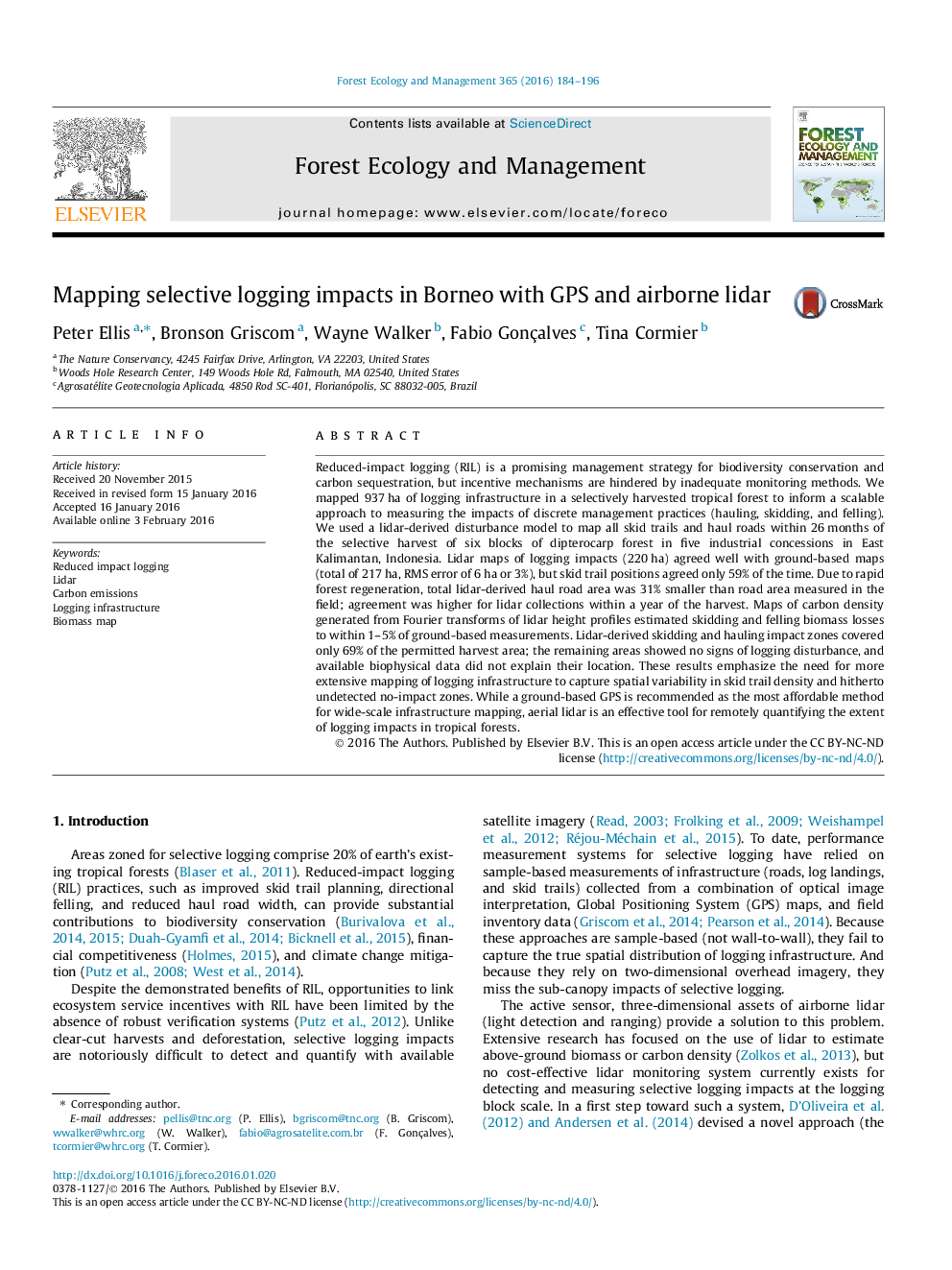| کد مقاله | کد نشریه | سال انتشار | مقاله انگلیسی | نسخه تمام متن |
|---|---|---|---|---|
| 6542370 | 159161 | 2016 | 13 صفحه PDF | دانلود رایگان |
عنوان انگلیسی مقاله ISI
Mapping selective logging impacts in Borneo with GPS and airborne lidar
دانلود مقاله + سفارش ترجمه
دانلود مقاله ISI انگلیسی
رایگان برای ایرانیان
کلمات کلیدی
موضوعات مرتبط
علوم زیستی و بیوفناوری
علوم کشاورزی و بیولوژیک
بوم شناسی، تکامل، رفتار و سامانه شناسی
پیش نمایش صفحه اول مقاله

چکیده انگلیسی
Reduced-impact logging (RIL) is a promising management strategy for biodiversity conservation and carbon sequestration, but incentive mechanisms are hindered by inadequate monitoring methods. We mapped 937Â ha of logging infrastructure in a selectively harvested tropical forest to inform a scalable approach to measuring the impacts of discrete management practices (hauling, skidding, and felling). We used a lidar-derived disturbance model to map all skid trails and haul roads within 26Â months of the selective harvest of six blocks of dipterocarp forest in five industrial concessions in East Kalimantan, Indonesia. Lidar maps of logging impacts (220Â ha) agreed well with ground-based maps (total of 217Â ha, RMS error of 6Â ha or 3%), but skid trail positions agreed only 59% of the time. Due to rapid forest regeneration, total lidar-derived haul road area was 31% smaller than road area measured in the field; agreement was higher for lidar collections within a year of the harvest. Maps of carbon density generated from Fourier transforms of lidar height profiles estimated skidding and felling biomass losses to within 1-5% of ground-based measurements. Lidar-derived skidding and hauling impact zones covered only 69% of the permitted harvest area; the remaining areas showed no signs of logging disturbance, and available biophysical data did not explain their location. These results emphasize the need for more extensive mapping of logging infrastructure to capture spatial variability in skid trail density and hitherto undetected no-impact zones. While a ground-based GPS is recommended as the most affordable method for wide-scale infrastructure mapping, aerial lidar is an effective tool for remotely quantifying the extent of logging impacts in tropical forests.
ناشر
Database: Elsevier - ScienceDirect (ساینس دایرکت)
Journal: Forest Ecology and Management - Volume 365, 1 April 2016, Pages 184-196
Journal: Forest Ecology and Management - Volume 365, 1 April 2016, Pages 184-196
نویسندگان
Peter Ellis, Bronson Griscom, Wayne Walker, Fabio Gonçalves, Tina Cormier,